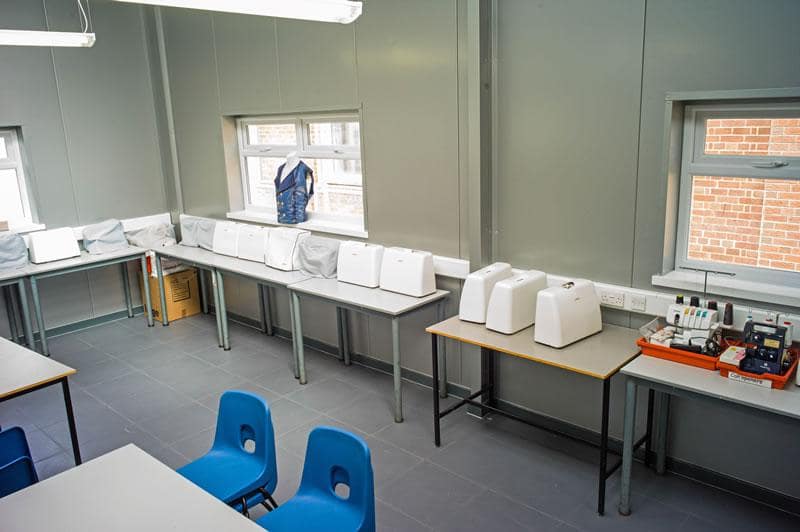In recent years, there has been a noticeable shift in how educational institutions manage space and resources. Many schools, ranging from primary to tertiary institutions, have started to utilize temporary building structures for classrooms. This trend is driven by several factors, including cost efficiency, flexibility, and the urgent need for additional space. This essay explores the reasons behind this shift, examining the benefits and implications of using temporary structures as learning environments. Temporary Building Structures
Cost-Effective Solutions
One of the primary reasons schools opt for temporary buildings is cost-effectiveness. Traditional construction can be prohibitively expensive, involving lengthy design and building phases, high material costs, and significant labor expenses. In contrast, temporary buildings are typically prefabricated offsite and assembled on location, which significantly reduces construction time and cost. This affordability allows schools to allocate funds to other essential areas like educational technology, teacher salaries, and student resources. Building Structures For Classrooms
Speed of Construction
The need for rapid expansion of facilities is another critical factor driving schools toward temporary structures. Educational institutions often face sudden increases in enrollment due to population growth or shifts in school zoning. Temporary classrooms can be deployed quickly to accommodate these changes. For instance, in response to a sudden influx of students, a school can have additional classrooms ready within weeks, ensuring that the quality of education is not compromised by overcrowding.
Flexibility and Scalability
Temporary buildings offer unparalleled flexibility. They can be easily expanded, reduced, or reconfigured according to the changing needs of the school. This adaptability is particularly useful for schools that experience fluctuating student numbers. Additionally, temporary classrooms can be relocated as needed, making them an excellent option for schools undergoing renovation or facing uncertainty about future land use.
Minimal Disruption
Using temporary structures minimizes disruption to the school environment. Construction of traditional buildings on school grounds can significantly disrupt school activities. It typically involves heavy machinery, noise, and safety concerns, which can detract from the learning environment. In contrast, most temporary buildings are constructed offsite and simply assembled on campus, significantly reducing the impact on daily school operations.
Environmentally Friendly Options
Many modern temporary buildings are designed with sustainability in mind. They often use recycled materials and are built to be energy-efficient with good insulation properties and sometimes even incorporate renewable energy sources like solar panels. This focus on sustainability is increasingly important to educational institutions aiming to reduce their carbon footprint and teach environmental stewardship by example.
Emergency and Disaster Response
Temporary classrooms are also invaluable in emergency situations or following disasters such as fires, floods, or earthquakes. Schools affected by such events can use temporary structures to resume classes quickly, ensuring continuity in education and providing a sense of normalcy for students during challenging times.
Challenges and Considerations
Despite their benefits, temporary classrooms come with challenges. Concerns about the durability and security of these structures are prevalent. While modern temporary buildings are designed to be robust and secure, they may not always offer the same level of durability as traditional constructions. Furthermore, the aesthetic appeal of temporary buildings can be a concern, as they might not blend seamlessly with existing structures.
Additionally, there are educational considerations. The learning environment plays a crucial role in student performance, and some argue that temporary structures may not provide the same conducive learning atmosphere as permanent buildings. This perception can impact stakeholder attitudes, potentially influencing parent and staff satisfaction.
Future Directions
As technology in modular and prefabricated construction continues to advance, the future of temporary school buildings looks promising. Innovations are likely to produce even more durable, secure, and comfortable temporary classrooms that can rival their permanent counterparts. Moreover, as awareness of the benefits of these structures grows, more educational institutions might adopt this flexible approach to managing school infrastructure.
Conclusion
The use of temporary building structures for classrooms is a pragmatic solution to several challenges faced by educational institutions. These buildings offer cost-effectiveness, flexibility, speed, and minimal disruption, making them an increasingly popular choice for schools needing to expand or modify their facilities swiftly. While there are some drawbacks, the potential for improved designs and increased acceptance of temporary structures suggests that they will continue to play a significant role in the evolving landscape of educational environments. This trend underscores a broader move towards adaptability and sustainability in the construction and use of school facilities, reflecting changing educational needs and priorities in a dynamic world.

